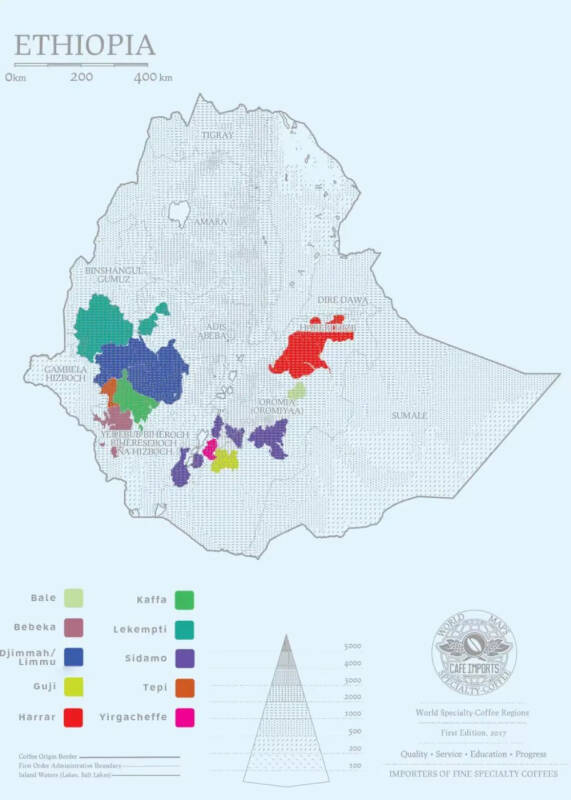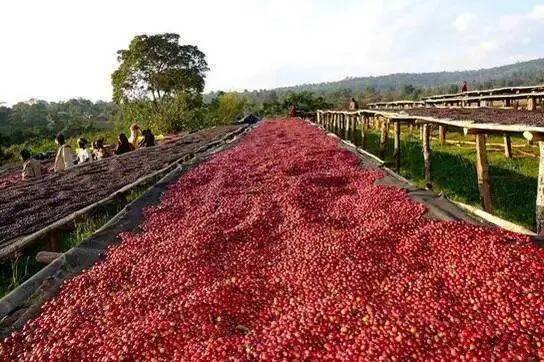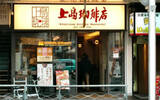Introduction of Red Cherry Project and Ethiopian Yega Xuefei Sun Red Cherry Coffee
For coffee lovers, Ethiopia is a sacred place in mind. This country is not only the birthplace of coffee, but also an important exporter of fine coffee. There are currently about 10000 to 15000 coffee varieties in Ethiopia, but most have not yet been formally identified. Now in Ethiopia, there are many well-known coffee producing areas, such as Sidamo Sidamo, Guji Guji, Yegashifi Yirgacheffe, Jinma Jima, Haller Harra.

Yejia Xuefei producing area
Yega Xuefei is located on the eastern edge of the East African Rift Valley, 1700-2100 meters above sea level. In terms of administrative division, Yega Xuefei said that it belongs to a small town in Sidamoma. Yega Xuefei used to belong to a by-product area of Sidamo, but because of its bright citrus acidity, fresh citrus tone and rising jasmine aroma, it is similar to but obviously different from Sidamo, so it is independent as a producing area.

The Ethiopian government also registered a trademark for the producing area, and the Ethiopian Commodity Exchange (EXC) has the right to use the trademark. According to the trademark, only those produced in the Yega Sheffield area and confirmed by the EXC Cup test can be branded with the Yirgacheffe trademark.
Native species Heirloom
In Ethiopia, coffee is grown on a large scale, mainly courtyard coffee. Coffee and other crops are grown near the farmers' homes, taken care of by the farmers on a daily basis, collected by themselves during the harvest season, and then collected and processed by middlemen or treatment stations. This model accounts for more than half of Ethiopia's total coffee production.
According to official statistics, there are about 15000 coffee varieties in Ethiopia that have not been genetically identified. It is very difficult to count, identify and classify these varieties, and according to the main planting pattern in Ethiopia, the coffee beans collected by the treatment station may contain a variety of varieties, so Ethiopian coffee beans are collectively referred to as Heirloom, translated as native species or family heirlooms, which is why Ethiopian beans are not uniform.
Red Cherry Project
In the past, when there was no concept of boutique coffee beans, in order to earn more profits, coffee cultivation was based on output rather than quality. At the harvest time, both overripe and immature coffee berries are harvested at the same time, which will eventually affect the poor flavor of the coffee.
So in 2007, the Dutch raw bean manufacturer Trabocca put forward the "Red Cherry Project" (ORC). First, the Dutch raw bean merchant invited all farms in Ethiopia to produce small batches of beans of about 1500-3000 kilograms, and required these batches to be made of 100% manually picked ripe red fruit, and then purchased at a price several times higher than the market. As a result, the income of farmers has increased, and so has the price of raw coffee beans. After all, more manpower is needed and more money will be invested in harvesting, selection and processing.
However, not all raw beans will be purchased at a high price by Trabocca, and Trabocca will also choose from them, and the beans must be up to the standard at the offices in Ethiopia and the Netherlands. To sum up, Red Cherry plans to increase the purchase price of high-quality coffee raw beans to encourage farmers to complete every process of collecting and processing coffee berries. In this way, the coffee beans produced are of better quality and taste, and are recognized by the market to obtain a relatively high purchase price. At present, the main producing areas of the red cherry project are Yega Sheffield, Sidamo, Penga Forest, Lekanti, Ken Bata, Hara, Lim and so on.
Qianjie coffee Ethiopia Yega Xuefei sun red cherry coffee bean production area: Yega Xuefei production area altitude: 1700-2200 m varieties: original species Heirloom treatment method: sun treatment flavor: berries lemon fermented fruit fragrant strawberries
The Ethiopian Yega Snow Red Cherry Coffee beans bought from Qianjie Coffee are sun-treated and lightly roasted. In front of the street, the proportion of V60Graz is 15, and the water temperature is 92 ℃. It will smell slightly fermented fruit, fresh lemon acidity, berry and strawberry flavor, and refreshing taste.
Important Notice :
前街咖啡 FrontStreet Coffee has moved to new addredd:
FrontStreet Coffee Address: 315,Donghua East Road,GuangZhou
Tel:020 38364473
- Prev

Who can tie a Chinese knot? Manner barista: I got it!
▲ Click to follow | Daily boutique Coffee Culture Magazine Coffee Workshop in this multicultural era, some coffee shops are not only satisfied with providing high-quality coffee, but also to attract guests to come up with their own tricks, including a move that does not require too much investment but gives guests a great atmosphere for the Spring Festival-- the festival limit.
- Next

Sad! Shangdao Coffee begins to sell Farm Chicken
▲ click follow: daily boutique coffee culture magazine Coffee Workshop in recent years, many large chain coffee brands are engaged in comprehensive competition, and this competition has become increasingly fierce, many independent cafes and some chain brands are facing difficulties. I don't know if you still remember when I was a child.
Related
- Is espresso stored overnight in the refrigerator harmful to your body? Is frozen coffee better than freshly ground coffee?
- What parameters and proportions of water temperature should be used to grind and brew fresh coffee beans? Why can't I drink freshly roasted coffee right away?
- Customers have "changed" Manner's new products! Shop assistant: Please don't mess around!
- Remove sockets in customer areas at Starbucks stores?! Netizen: I won't go if I really tear it down
- What is the difference between the taste steps of sun-dried coffee and washed coffee? Why is sun-cured coffee sweeter and washed coffee sour?
- The recipe for salty grapefruit dirty is revealed! Coffee Festival salty grapefruit dirty coffee making materials parameters ratio milk share!
- How about the flavor of Sunlight 74158 at Sidamo Banshaha Mathieu Processing Factory in Ethiopia? 74158 Share the proportion of coffee brewing parameters!
- What effect does Italian American coffee with filter paper have? Will coffee taste better if it is put on filter paper at the bottom of the powder bowl?
- What is the color difference in coffee beans? What are the characteristics of honey processed coffee beans? Why are the anaerobically treated coffee beans uneven in color?
- How does novice Xiaobai quickly get started and make coffee? Newbies learn to make coffee by hand and share the specific steps and process process!

